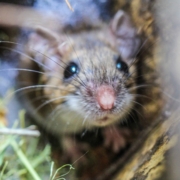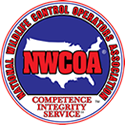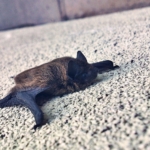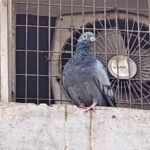Do Rodents Nest In Attic Insulation?
Many attics can be infested with rodents, particularly when colder weather sets in. These mischievous little animals are especially fond of living in insulated attics that provide them with safety, warmth, easy access to food, and shelter from the elements and predators. They take advantage of the area that’s filled with cozy, soft, and squashy insulation as it is a perfect environment for nesting.
Once settled, rodents can cause some of the worst damage to your attic insulation. They will burrow and build a nest directly in the insulation. Alternatively, they will gnaw on and shred it into pieces with their sharp incisor teeth, and carry the material away to make a nest elsewhere in the house. Either way, the insulation becomes torn and destroyed, and the R-value is compromised.
Can Rodents Burrow And Live In Attic Insulation?
Since rodents like a warm and soft environment for nesting, it’s easy to see why thermal insulation is so suitable for them. These animals are able to burrow through your attic insulation with little effort.
The attic is an ideal place for them as it is quiet, dry, sheltered, comfortable, and safe for raising their young. While living in the attic, they can tunnel through rigid insulation foam, create a nest for their offspring, and collect and stockpile food without any interruption from humans or predators.
They might also burrow between the insulation and the floorboards. Once in there, they will snuggle and breed between the layers as the space makes an attractive and cozy shelter for nesting and protection from the elements that would otherwise bring in moisture. The nests also provide the rodents with heat insulation from low temperatures.
If these undesired pests are living in your attic, the damage to your insulation is only one of the problems you will face. Rodents can cause house fires when chewing on electrical wires and cables, they carry deadly diseases and cause allergic reactions.
Therefore, keeping them out of your home altogether seems to be the best solution to protect yourself, your family and pets, and your attic insulation.
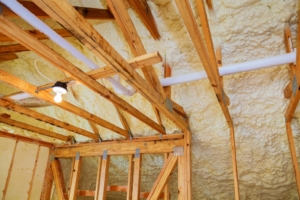
What Kind Of Insulation Is Rodent Proof Or Resistant?
Many types of insulation are susceptible to rodent invasions, and offer them the perfect nesting ground and a great source of food. There’s no doubt that rodents damage most insulation materials. However, even though there is no such insulation type that guarantees 100% protection and is truly rodent proof, certain products offer greater resistance.
Cellulose insulation
This insulation type is made of ground-up newsprint and recycled paper. As its composition is dry, it makes it difficult for most rodents to thrive. It repels rodents because it’s loose and not solid, and it collapses as they start digging in to make their nests, thus, making the insulation inhabitable. Also, cellulose insulation can be sprayed with boric acid, borax, or aluminum sulfate to control and keep the pests out.
Fiberglass batts
Fiberglass batts come in thick and squishy sheets that can get easily moved and molded into various shapes. That makes it very inviting to rodents wanting a cozy place to settle down and build a nest. It’s easy for them to burrow and nest in low- or mid-density fiberglass batts and lightweight fiberglass panels. Also, this form of insulation does not provide airtight coverage and leaves gaps large enough for the pests to pass through.
Loose fill fiberglass
This is a loose insulation form that needs to be blown into the walls using a special machine. It’s a better option than fiberglass batts since it tends to fall in on itself as it’s a loose material, which makes it less appealing to rodents.
Spray foam
Spray foam insulation can be considered rodent resistant as the critters will not chew on or eat it, as opposed to other types of insulation. It does not provide the best nesting material either. Spray foam won’t settle or sag over time and it seals any area in a house very effectively, which is an advantage because it keeps rodents out.
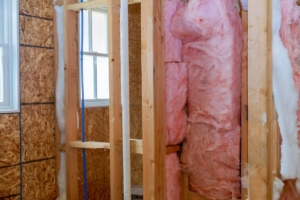
How To Keep Rodents Away From Nesting In Attic Insulation?
The best way to keep rodents out of your attic insulation is to deter them from coming into your home in the first place.
There are several ways to prevent rodents from entering and nesting in your attic insulation.
First, it is necessary to locate and block all possible entry points as well as remove the things from your attic that make it an attractive place for rodents to nest.
Therefore, avoid keeping items like old clothes, papers, or other materials in the attic as these animals could be encouraged to use them to build nests.
Inspect for small holes and cracks around the foundation, between the roof and eaves, places where wires and utility pipes enter the house, and on the siding. If you find any gaps or open areas, make sure to seal them up with materials that the rodents cannot eat through, such as cement, plaster, or steel wool.
Block cracks around drain pipes and other wall openings by installing a wire mesh. Anti-intrusion mesh screens installed at the rodent entry points are a highly effective solution for preventing rodent intrusion.
Additionally, inspect the attic space for tunneling, especially if your house has blown-in insulation.
Trim your yard trees back so they’re at least 18 inches away from the house. When they are not trimmed, wildlife can use them to gain access to the attic.
Eliminate any potential food sources for rodents. Make them inaccessible by covering your trash cans with lids, not leaving pet food outside, storing bird seeds in sealed containers, removing any open compost, and picking up any fruit or vegetables that may be lying around your yard.
Set up rodent traps outside. Also, spread poisons around the perimeter of your house, around the waste bins and basement entrances, and near the entrance doors and windows.
You may also want to consider placing all-natural repellants around your yard, such as vinegar, peppermint, cayenne pepper, or tea tree oil. Rodents find these smells strong and off-putting, and will try to get as far from them as possible.
Rodents pose a serious threat to the effectiveness of the insulation in your home. If you have rodent damage in your insulation, it needs to be repaired or replaced as soon as possible. If you’re dealing with a rodent infestation, it’s important to contact pest control and insulation experts who can help get rid of the wildlife out of your attic, and then remove the damaged insulation and replace it with a new one.
Whether you have mice, rats, or any other kind of rodents or pests that are destroying your insulation, we are here to help at Pest Control Authority Wildlife. Contact us today! Our technicians are trained to deal with the problem efficiently and can provide an excellent service that will give you peace of mind after their intervention.

